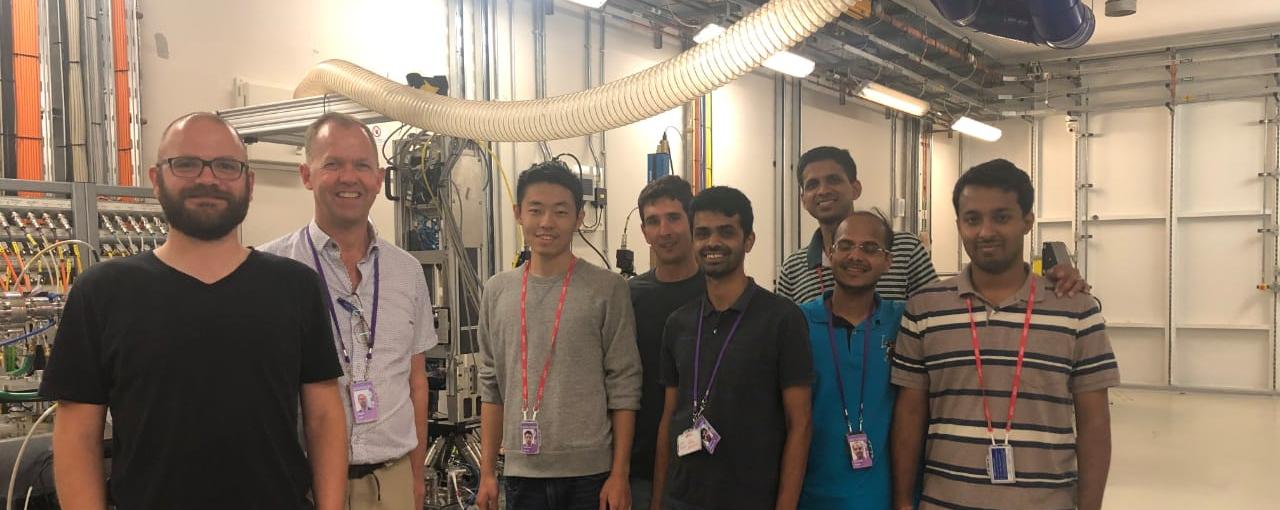A collaborative study, developed at the Research Complex at Harwell, between University College London (UCL), the Indian Institute of Technology Bombay (IIT Bombay), Diamond Light Source and Ford Motor Company has successfully resulted in predictive modelling to improve vehicle fuel efficiency. The work aimed to understand and predict the microstructural features formed during the high pressure die casting of automobile components and it is hoped that the applied knowledge will lead to significant benefits in reducing wastage and energy consumption.
The Problem
The work aimed to understand and predict the microstructural features formed during the casting of automobile components.
The Proposal
A grant from Ford enabled a joint PhD project to be formulated by Professor Shyamprasad Karagadde at IIT Bombay and Professor Peter Lee at UCL, whose research group is based at Research Complex. This led to Shishira Bhagavath (PhD student at IIT Bombay) and Zhixuan Gong (UCL PhD student based at Research Complex) driving the research together.
Drs. Bita Ghaffari and Mei Li from Ford, together with Professors Lee and Karagadde, led the overall project. Shishira and Zhixuan both worked on the experimental design, execution and data analysis of experiments at Research Complex and Diamond Light Source, with Shishira leading the experimental work and Zhixuan, the computer simulations. Tim Wigger (Post-Doctoral Research Assistant), Saurabh Shah (UCL Experimental Officer), and Sebastian Maruzzi (UCL Design Engineer), also all based at Research Complex, helped design and perform the experiments.
The project received additional funding through the visits of students and academics, workshops on X-ray imaging, and publications. A further interesting discovery was how porosity formed as it deformed in its semi-solid state while solidifying during the casting process. The work has led to several publications, the latest of which is published in Acta Materialia.
The Challenge
The challenge was to design a scaled replica of the high pressure die casting process that allowed in situ imaging using synchrotron x-rays at Diamond Light Source, the UK’s synchrotron light source. This was a real challenge as the system had to allow high pressures, fast deformation rates, and yet be translucent to x-rays.
The Solution
Up until now, speeds up to 10 µm/s for in situ deformation have been reported whereas this work captured much faster filling and solidification, at speeds closer to 100 µm/s and at different solid fractions.
Fast synchrotron imaging experiments at Diamond’s imaging beamline, JEEP, were conducted in order to simulate high pressure die casting of aluminum alloys and then investigate the effect of solid fraction, loading conditions and semisolid flow on formed microstructural features. This was a continuous capture of material flow, microstructure and defect formation (similar to continuously imaging a human bone cracking in a hospital).
The team integrated the furnace for heating the specimen to high temperatures and used Professor Lee’s 'P2R' thermo-mechanical rig at Research Complex for replicating industrial manufacturing conditions, which could then be tested on the beamline. The heating and mechanical deformation rigs available at Research Complex are unique and the proximity of Research Complex to Diamond meant that experiments could be tested and set up with significant ease. This included running day and night shifts for the complex experiments requiring at least three people to be present in the experimental room whilst the results were captured using high speed radiography.
Accelerated research collaboration
The experiments were only possible with everybody from IIT Bombay, Ford, Research Complex and Diamond working together as a team – with IIT Bombay's laboratory testing and design of experiments; the unique facilities built by UCL which are available for collaborative work at Research Complex, such as unique environmental stages, thermo-mechanical rigs and analysis expertise; and Diamond, where each individual beamline has been specifically designed to support a particular research community or technique, in this case, the imaging beamline.
Impact of Research Complex
Collaboration was crucial to this project and has given critical insights into the actual manufacturing process at localized regions. It is these insights which Ford will now use in modifying the process and physical understanding of defects in order to achieve reduced material wastage and energy consumption and it is hoped with significant cost savings as a result.
Image: The international team from IIT Bombay, UCL, Research Complex and Diamond assembled to help Dr Bhagavath solve a key challenge posed by Ford using the UK’s synchrotron Light Source.


